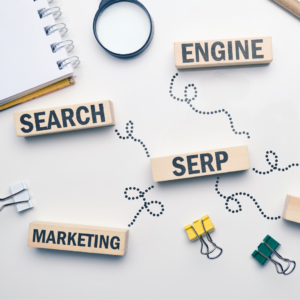Imagine two vastly different visits to a local grocery store. The first, a spacious and brightly lit shop with products neatly arranged on shelves. They’re placed according to categories and clearly labelled with prices. At the entrance, a colourful assortment of the freshest fruits and vegetables are on display. Soothing music plays as you navigate through the wide aisles, all of which have signages of the products therein.
At the second one, you face a dimly lit and crowded mart. The floor is bare cement and products are strewn all over the place, many still in boxes on the floor. The aisles are cramped and you can hardly squeeze through with your basket. Some products are missing price tags and there isn’t a system for their placements. At the entrance, some undisposed bags of rubbish. You struggle to find what you need.
Which grocery store would you prefer? That is the crux of visual merchandising in retail.
What is Visual Merchandising?
Visual merchandising is the art of displaying your products and decorating your store to attract customers. One of the first businesses to employ visual merchandising was Liberty & Co. in the 19th century. As one of the earliest department stores in London, they were the pioneers in creating attractive window displays.
Today, visual merchandising has been distilled into a science. Professional courses in visual merchandising are available, whereby students learn how to optimise displays and designs to influence customer psyche.
In order to continue being competitive, modern retailers need to adopt the tenets of visual merchandising. In effect, it is a form of marketing which draws customers into the store, and positively influences their tendency to make purchases.
The Different Types of Visual Merchandising in Retail
Different parts of a store can be fitted with various types of setups to enhance customer experience. Visual merchandising also covers more macro retail concepts that cover the entire physical aspect of a brick and mortar business. Let’s see what these are:
Store Layout
Also known as a floor plan, the store layout concerns where you place your products, and the pathway which you create to guide your customers. Store layout is closely tied to consumer psychology and its basic tenets have been formed by years of research into shopper behaviour. Floor plans help customers navigate through your store, but can also be used to guide them to highlighted products.
One good example of this is IKEA stores, where a clearly marked pathway brings shoppers from one department to another, starting from the kitchenware and ending with garden fixtures.
Window Displays
Window displays are usually found at the front of a store, and create the first impression of the brand. It is also meant to attract potential customers from among those walking past. Businesses often use this opportunity to display their latest or best-selling products.
For instance, fashion boutiques will display mannequins of the latest designs, modifying them as the seasons change or as new designs become available. Window displays can also be decorated to fit upcoming festivities, like Chinese New Year or Christmas.
Lighting
Lighting can affect customer behaviour just like the other elements of visual merchandising. They can be used to highlight a pathway you want the customers to follow, or guide their attention to a portion of your products you want to showcase.
Bright lighting has been shown to improve sales and positively impact customer moods. This is due to the fact that shoppers are able to better see and perceive all the products without straining. The improved sensory experience also contributes to a heightened brand connection among shoppers.
Point of Purchase (POP) Displays
If you’re ever been to a check-out counter at a supermarket, you’ll remember seeing racks of products displayed either beside the counter or prominently at the front. They’re usually filled with candy, soft drinks and snacks. These are known as point of purchase (POP) displays.
POP displays are a final effort to persuade customers to add items to their purchases. In effect, they encourage impulse buying of small items by customers, and their younger counterparts too. Although not a main contributor, these small purchases do have a positive effect on sales.
Bundling
Bundling is the practice of promoting items related to the main product a customer is interested in. For example, if a customer intends to purchase an oven, the salesperson may recommend baking trays and baking gloves to them as well. In a store display, bundling takes the form of displaying several items together.
In fashion outlets, different pieces of accessories such as bags and jewellery are fitted onto a fully dressed mannequin, coaxing the customer to complete their outfit with added purchases.
Bundling can also take the form of lifestyle displays, whereby various products are set up together to mimic their use in real life. One such example is the sports brand Decathlon and their outdoor camping displays.
Photographs, Signages and Screens
Clear signages and large images contribute to creating a conducive shopping environment. Large screens that are used to display ads and brand information can educate consumers and highlight products. They are an effective communicator of marketing promotions, such as sales and discounts.
It is therefore important to ensure that the message you want to present is clear, and presented in a simple and straightforward manner.
Sensory Elements
Research has shown that music can affect the amount of time people spend in your store. The type of music you play should suit your brand image too, and promote the energy levels that are suitable for your target market. For instance, a sports store may play more upbeat hiphop music, whereas a branded perfume store should consider something more subdued.
Scents are also another element to consider, as scents can affect shoppers’ moods too. The aroma your store features can build brand loyalty and confidence, as well as improve brand perception.
Final Words on Visual Merchandising
Some of the best retail brands in the world have achieved their current success with the aid of professional visual merchandisers. To begin improving the brand appearance and perception of your business, understanding the basics of this concept is crucial.
Besides enrolling in a Visual Merchandising course, training yourself on Consumer Behaviour and Environment can be your first step in creating effective store displays. Contact TaF.tc Retail today to learn how your visual merchandising skills can be further developed. You can try to check out these course hubs: data analytics, leadership, and customer experience courses.




